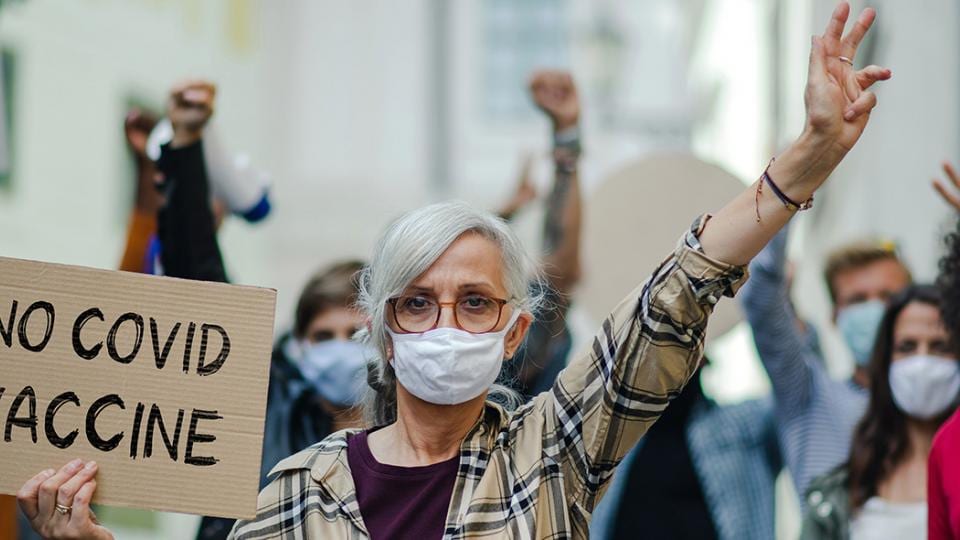Aspirin's Trip to the Moon

Humans first set foot on the Moon on July 20, 1969. Items on board Apollo 11 all those years ago included a number of carefully selected medicines, including acetylsalicylic acid, the intellectual property of Bayer. This article takes a medical journey back in time, exploring the fascinating story of space flight and the history of Aspirin.
In the infancy of manned space travel, the effects of a space mission on the human organism were unclear. It was a voyage into the unknown. How would a lengthy period of zero gravity affect the crew’s bodily functions such as respiration, circulation, consciousness and vision? And how would the human body cope with accelerations many times higher than those generated by the gravity on Earth as they traveled into space and back home again?
Wide-ranging tests were carried out to prepare the astronauts as thoroughly as possible. The strict selection procedures were based not only on physical fitness, but also on dexterity, stamina and the ability to cope with stress. The story goes that one of the ways candidates at NASA in the United States had to prove their motivation was to keep their feet in ice-cold water for seven whole minutes. A feeling of weightlessness could be created for short periods with unusual flight maneuvers, but the question of what the effects on the human body would be was naturally harder to answer.

The first space travelers – a Soviet dog and two American chimps
To avoid exposing humans to incalculable risks, animals were the first test subjects sent into space. A Soviet dog called Laika and two American chimpanzees, Ham and Enos, became particularly famous. Only once these animals had returned safely from their travels, humans did follow.
It all began under strict medical observation. When Yuri Gagarin became the first human in space in 1961, his flight lasted less than two hours. He made a point of eating a snack from a tube, because the doctors wanted to see whether it was equally easy to eat, drink and swallow unhindered in space.
NASA also collected as much medical data as possible. During the first manned U.S. space flights – the one-man Mercury missions (1961-1963) – the astronaut’s respiratory rate, blood pressure, cardiac function and body temperature were continuously monitored, and his face and upper body were filmed. The on-board pharmacy was also geared to the principal medical risks. Since it was impossible to take tablets in a sealed spacesuit, four syringes were incorporated into the suits to automatically administer the necessary individual dose of a drug to relieve pain, shock, dizziness or fatigue, if required.
USSR versus USA – both used aspirin in the space race
The conquest of space was also a race between the two superpowers of the time – the USSR and the USA. The Soviet Union led the way for a long time. After making Gagarin the first man in space, it also sent the first woman into space – Valentina Tereshkova in 1963. Gherman Titov was the first cosmonaut to circle the Earth for longer than 24 hours, and Alexei Leonov was the first to go on a spacewalk.
To catch up, the U.S. President at the time, John F. Kennedy, announced an ambitious goal – to land on the Moon by the end of the 1960s. In 1968, Frank Borman, Bill Anders and James Lovell (who went on to be commander of the Apollo 13 mission, also made famous by Hollywood) circled the Moon on board Apollo 8. Few people will not have seen the photos they took, including the complete image of Earth’s blue and white globe against the black background of space.
Both the Soviets and the Americans put together on-board pharmacies for their astronauts, and both included a number of basic components – above all drugs to combat complaints that could jeopardize the success of the missions, such as nausea, respiratory problems, gastrointestinal disorders and headaches. In 1967, NASA defined a list of priority drugs and active ingredients. At the very top was: acetylsalicylic acid, the ingredient of AspirinTM.
Apollo 11 and the imminent Moon landing caused people around the world to be gripped by space fever. Late in the evening on July 20, 1969 in the United States and in the early hours of the morning on July 21, 1969 in Europe, the world watched spellbound as Michael Collins set down his fellow astronauts Buzz Aldrin and Neil Armstrong from the Moon’s orbit, the two of them hopped over the dusty surface of the Moon and Armstrong said those immortal words: “That’s one small step for (a) man, one giant leap for mankind.”
This year marks the 55th anniversary of this world-historical moment.
NASA published a detailed press manual with a total of 250 pages about the Apollo 11 mission. The entry about the on-board pharmacy is short at just 14 lines, but still precise. According to this entry, the Columbia command module’s medical kit for the three astronauts included the following tablets: "60 antibiotic, 12 nausea, 12 stimulant, 18 pain killer, 60 decongestant, 24 diarrhea, 72 aspirin and 21 sleeping pills". The Eagle Moon lander, which duly landed on the surface of the Moon, had a further small medical kit containing four tablets with stimulants, eight tablets to relieve diarrhea, two sleeping pills, four painkillers, twelve aspirins, two bottles of eye and nose drops, and compresses.
NASA has published drug inventory and usage details for all Apollo missions. Aspirin is one of the drugs used most, including on the historic Apollo 11 mission.
The drugs on board were US-American aspirins and therefore probably not from Bayer's production. This is because Bayer had to give up its patent on aspirin in the United States as a result of World War I. Nevertheless, also the aspirin in the moon capsule was based on Bayer's intellectual property and Felix Hoffmann's invention at the end of the 19th century.
On the occasion of Bayer’s 150th anniversary in 2013, the company spoke to Buzz Aldrin about his experiences in space and for a company video asked him about the importance of medical supplies. His answer: “We knew we had aspirin on board and that was one thing we could count on.” (For an interview about the video shooting with Buzz Aldrin, see below.)

Modern-day space travel – ever longer periods in space
To date, progress with space travel has above all been made in near-Earth orbit. With the introduction of the reusable space shuttle and the first permanently manned space station, Mir (1986-2001), voyages into space became an ever more common occurrence. As the length of such voyages increased, so did the list of possible medical problems and the drugs on board. In 1994, the list of drugs and medical devices on the U.S. space shuttle included over 200 items. The Russian space station Mir also had several pharmacies sorted according to areas of indication.
On the International Space Station (ISS), which has been permanently manned by astronauts since 2000, both the range of pharmaceuticals and the amount of medical equipment have increased significantly. It is now well equipped for dental treatment, resuscitation and operations.
From a pharmaceutical perspective, the stability of drugs is particularly relevant. The contents of the ISS pharmacies are currently replaced every few months, because the increased radiation in space affects the shelf life of many drugs. If major missions such as a trip to Mars lasting several years are undertaken in the future, however, far longer shelf lives will be required. The people in charge are well aware of the challenges. Should NASA risk a flight to Mars, it has already stipulated that the crew will include at least one doctor.
This text first appeared in a longer version, in German, in the journal “Pharmazeutische Zeitung”.
Learn more about the fascinating history of AspirinTM- click here for more details!

“The encounter with Buzz Aldrin was fascinating.”
For the 150th anniversary of Bayer AG in 2013, the company recorded a video statement with Buzz Aldrin, one of the first two people to set foot on the moon in 1969. The filming took place in Los Angeles in the summer of 2012 under the direction of Martin Spingys, former Bayer's Communications Director for the audiovisual media. He shares his memories of the special filmshoot.
Martin, what comes to your mind first when you think of the meeting with Buzz Aldrin?
“Hard to say. The film set was located on a golf course on the outskirts of Los Angeles and the interview started off totally different to what we were expecting. Buzz Aldrin was not the spiritual old man with outer space experience that we imagined. Instead, we got a highly energetic 82 year engineer, who above all wanted to talk about his calculations and concepts for colonizing Mars.”
But, he did eventually talk about the moon, didn´t he?
“Sure! But the moon landing had been just one of many missions for him, a former pilot in the Korean War. So his reaction when NASA nominated him for the mission to the moon, was simply to compare his chances of survival with his missions in Korea. Because this probability was better from his point of view, he agreed.”
And what did Buzz Aldrin report from space?
“He told us many things, but what stayed with me was for example when he described how the astronauts saw flashes of light with their eyes closed, due to the radiation in space. Then I was struck when he told us how much Neil Armstrong and himself felt with the third man of the mission, Michael Collins, who was orbiting the moon alone while the two of them were walking on the moon together. Something I found funny was that one of the first things Buzz Aldrin had to do after landing back on earth was to apply to NASA to get the bus fare of a few dollars to Cape Canaveral reimbursed.”
What is your conclusion, thinking back of the shooting?
"The encounter with Buzz Aldrin was fascinating. You could feel that this man was really up there. And that's what remained: the feeling of getting a little of the stardust he brought back from out there. I am very grateful that my job made this encounter possible for me.”





















